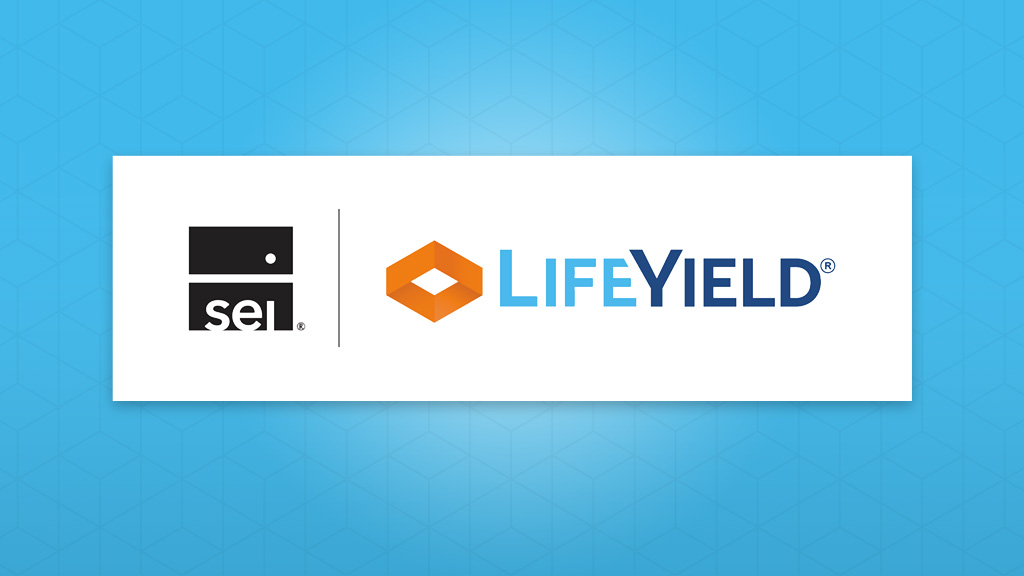Know the Limits of Account-Level Tax Loss Harvesting

Most advisors face the same conundrum: Clients have multiple accounts with different advisors or firms. It’s challenging, and sometimes impossible, to help your clients manage their portfolios in a tax-efficient way because you don’t have the whole picture.
Fortunately, there are tools available to advisors today to help lift their value to their clients – and, in the process, their firms. Those tools demonstrate to clients the benefit of engaging with you in household-level management, or what the industry recognizes today as unified managed household (UMH).
Let’s compare tax-loss harvesting at an account level to tax management at the household level, then how LifeYield helps advisors motivate clients to adopt a UMH approach to retirement planning.
Is this a Familiar Scenario in Tax-Loss Harvesting?
Bob, your client, makes an appointment because he wants to see how he can harvest tax losses to offset some long-term capital gains he will have this year. Today, Bob has brought you Portfolio A. You have recently begun working with Bob, so you ask him about his other holdings.
A few days later Bob calls with information about Portfolio B and, a week later, he presents a portfolio owned by his spouse. We’ll call that Portfolio C.
Intent on helping your new client, you could wind up looking at Portfolio A, crunching numbers, presenting your findings – and then having to go back to your spreadsheets when Bob shows up with Portfolios B and C.
You’d probably prefer that Bob had provided you with information on all these portfolios at once when he first came to get your advice on how to harvest tax losses to offset his capital gains. That way, you could work more effectively with Bob on tax-loss harvesting and the overall tax efficiency of his portfolio.
Moreover, eventually withdrawals and other movement of assets within Bob’s household could result in the need for rebalancing to stay aligned with Bob and his spouse’s financial plan. Without that household view, you’d be in the dark about how to help the couple do that.
Account-Level Versus Household-Level Management
Most investors nearing retirement today have myriad investments in tax-qualified and nonqualified accounts. They’ve made these investments over 30 or 40 working years as they progressed through their careers. Their focus has likely been on accumulation, so they have the money they’ll need to sustain their lifestyles in retirement.
When Bob came to you for advice on tax-loss harvesting, he was thinking only about this tax year and not about the implications of asset sales he makes today on his long-term financial plan. Managing single accounts in isolation can disrupt a household’s investment ecosystem, costing your clients more in taxes and chipping away at the bedrock of their retirement plans.
What is Tax Harvesting?
Tax harvesting happens in one of two ways – tax-loss or tax-gain harvesting. It’s your responsibility to do everything within your power to make an account as tax efficient as possible and do it in the correct way. It will also help win the confidence of your clients in your ability and in the opportunities your firm can offer them for asset management, tax planning, and other services.
Tax-gain harvesting
Tax-gain harvesting is used when an investor needs to realize a capital gain in a taxable account. Tax-gain harvesting is usually applied at the end of the year, when it is easier to calculate income and loss. Gains can help outweigh losses, keeping a portfolio — or, if you’ve achieved this – a unified managed household in balance and increasing its tax efficiency.
Tax-loss harvesting
You will likely need to use tax-loss harvesting more frequently for your clients. Tax-loss harvesting refers to selling an asset at a loss to offset the gains on the sale or sales of other investments. You may work with a client on tax-loss harvesting when you’re trying to reduce the amount of capital gains taxes your client will owe.
Life Yield Helps Advisors Meet the Challenges of Tax Harvesting
The traditional way of tax harvesting on one (or multiple) accounts is tedious, relying on manual entry, spreadsheets, and macros to find the most appreciated tax lots for gift-giving or for what assets to sell to offset gains or losses.
LifeYield, by contrast, offers a set of compatible and automated tools that help advisors optimize asset location, identify tax-harvesting opportunities, make tax-smart withdrawals, and maximize Social Security income for their clients.
One of those tools, LifeYield Tax Harvesting, helps you analyze a single investment account or a household account through the prisms of:
- Harvest direction: Tax-loss harvesting most commonly is used to offset capital gains or income, but it can also help identify the highest appreciated tax lots for gifts or charitable donations.
- Holding periods: Tax harvesting must take into account the tax rates that a client may be exposed to in order to maximize the benefits for any specified time period.
- Maximum gain or loss: Firms and their advisors set limits for gains and losses in each client’s portfolio to minimize the tax This strategy is best used when determining how to offset specific gains or losses.
- Maximum proceeds: You limit the total value of suggested sales, no matter the gain or loss. This lever is important when an entire transaction needs to stay under a specified dollar amount.
- Avoiding wash sales: A wash sale occurs when a client sells an individual stock to realize a loss then repurchases the stock within 30 days. Under Internal Revenue Service (IRS) rules, the initial loss cannot be used to offset any gain. LifeYield technology looks across both taxable and non-taxable accounts to identify any potential wash
Hazards of wash sales in account-level management
Say you have a client who has a significant liability in short-term capital gain taxes. The client is looking to offset those gains by selling, at a loss, some assets that aren’t performing as well.
But wait. This client has other investment accounts managed by other advisors or firms. You don’t know it, but another advisor purchases the assets you’ve sold within the 30-day window. The opportunity to realize a capital loss is, well, lost to your client.
This scenario points out again the importance of advising a unified managed household account rather than individual portfolios.
The best information to offset capital gains taxes – LifeYield
As firms have learned, automating manual or time-consuming tasks frees advisors to do the irreplaceable human side of the business, gathering assets from existing clients and wooing new ones. Advisors win in the marketplace when they can demonstrate how tax-efficient management leads to more income in retirement.
Advisors benefit from using the LifeYield Tax Harvesting engine in many ways, among them:
- Keep your current technology – LifeYield’s engine acts as an overlay to the technology in your stack and enhances your firm’s tax efficiency capabilities.
- Limit capital gains for your clients – Help your clients offset short-and long-term capital gains with automatic tax-loss harvesting of client accounts.
- Identify appreciated lots for your clients – Sell winning investments to realize gains for clients. Use this also to find the ideal assets for gift giving or charitable donations.
- Avoid wash sales – LifeYield lets advisors scan both taxable and non-taxable accounts across a household to reduce the occurrence of wash sales.
Why choose LifeYield for your firm
LifeYield makes it easier for advisors to identify and quantify the tax efficiency of each investment client’s account. LifeYield automates the process of factoring gains, losses, and tax harvesting across a household’s accounts. Then LifeYield makes it possible for you to automatically rebalance accounts after a withdrawal or tax harvesting sale, keeping the household on track toward its members’ plans for their financial future, including retirement.
LifeYield offers solutions for:
- Asset Location – measure the tax efficiency of an account, quantifying it, and offering guidance on how it can be made more efficient.
- Multi-Account Rebalancing – continue to use your current rebalancing software and incorporate multi-account tax harvesting and automated asset location optimization.
- Tax-Smart Withdrawals – execute the most tax-optimized withdrawals from multiple accounts by selling mislocated assets, minimizing drift, and identifying opportunities to harvest losses.
- Tax Harvesting –scan all taxable and non-taxable accounts, instantly identifying opportunities to harvest gains or losses, depending on the need of the client household.
- Social Security+ – identify the optimal filing strategy for each investment client and use Income Layers to visually demonstrate different scenarios to transition to retirement income.
Monthly insights from our Chief Growth Officer, Jack Sharry
Get exclusive insights and interviews from around the industry

 By
By 




